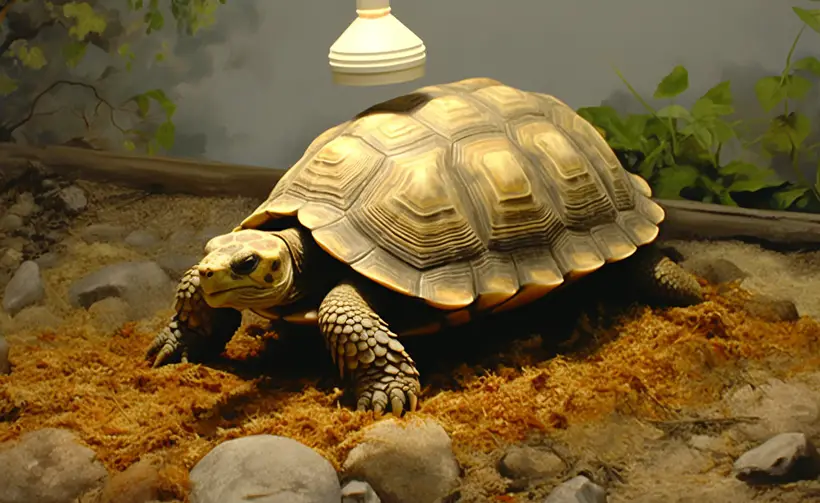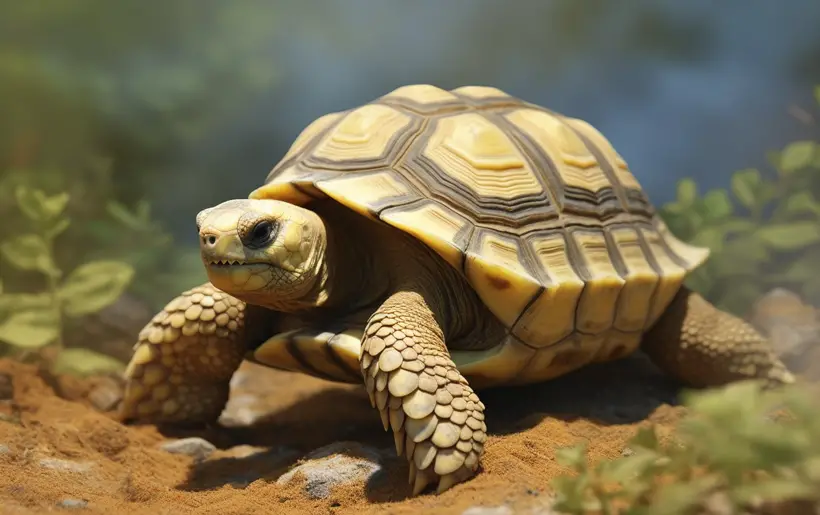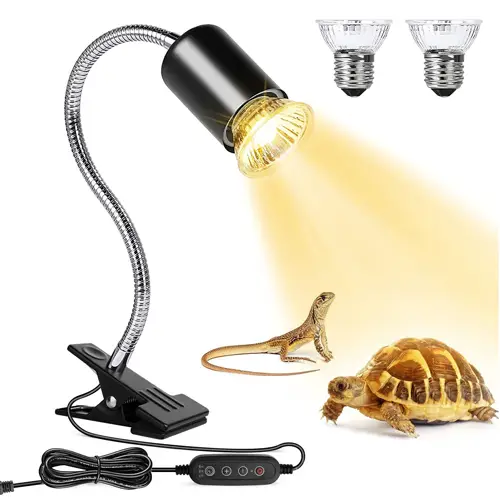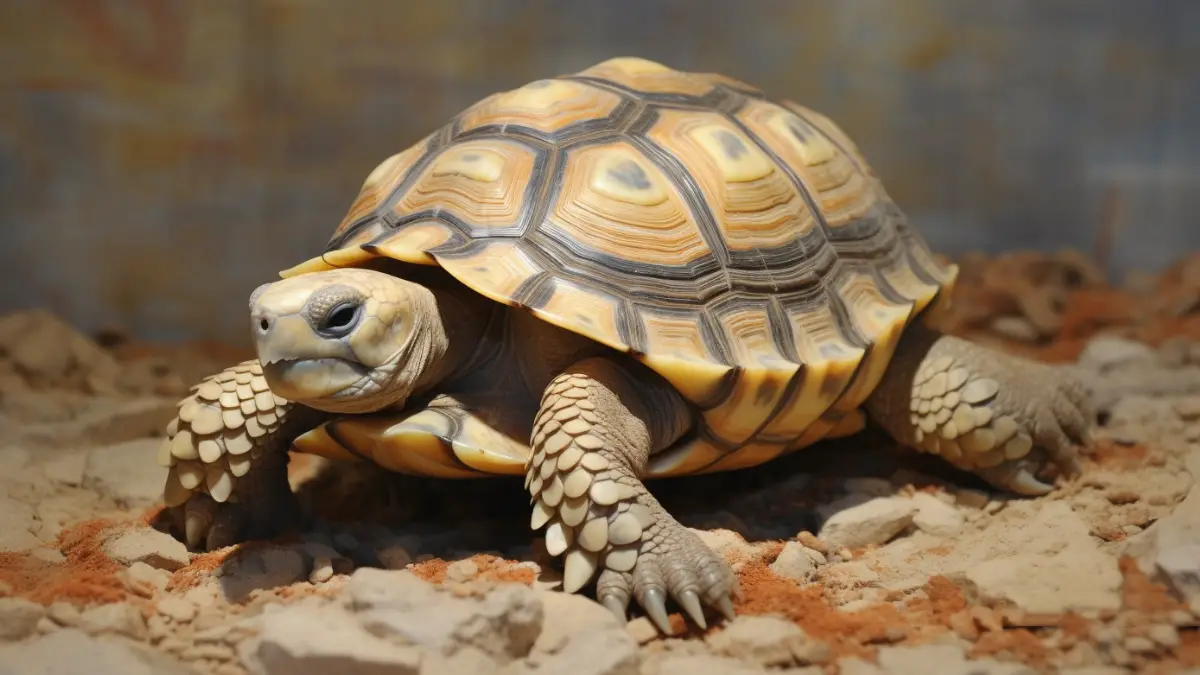Do Tortoises Need Heat Lamp? Let’s Find Out
Tortoises, being ectothermic reptiles, rely on external heat sources to regulate their body temperature. And when you pet a tortoise indoors, it’s even more important to keep an external heat source.
So, if you ask ‘Do tortoises need heat lamp? The answer is, yes. Tortoises often require a heat lamp to maintain suitable environmental conditions. This artificial heat source helps replicate their natural habitat. It also ensures their well-being and proper metabolic function. In fact, if you don’t, the tortoise may face health problems.
Let’s dive deeper into this matter. We’ll help you gain valuable insights into the specific temperature requirements for different tortoise species.
Why Do Tortoises Need Heat Lamp?
Contents
Let’s take a closer look at why tortoises rely on heat lamps. These fantastic reptiles have a unique way of handling temperature. If you want to take care of them, you need to understand the reasons.

Temperature Regulation
Tortoises, unlike us, don’t generate their heat. Instead, they take on the temperature of their surroundings.
To keep their bodies running smoothly, they need the right temperature. Heat lamps are like their personal heaters. With these things around, they can digest food, stay active, and thrive.
Mirroring the Great Outdoors
Tortoise gets stressed and they need to get over it. Imagine being a tortoise in the wild, basking in the warm sun. That’s their jam! Heat lamps mimic this natural setup. It recreates their cozy habitat indoors. This isn’t just about comfort; it also helps prevent stress-related health issues.
Health-Guard
When it’s too cold, tortoises can face some serious health troubles. This includes metabolic issues and respiratory problems.
Heat lamps come to the rescue by keeping their bodies at the right temperature. It also makes sure your tortoise digests its food well. Overall, thanks to heat lamps as help all of the systems inside the bodies of tortoises work smoothly.
Day and Night Rhythm
Just like us, tortoises need a regular day-night cycle. Heat lamps help create this rhythm by stimulating natural light and temperature changes. As a result, your tortoise gets to know when to munch on its favorite greens and when to take a rest.
What Are the Heat Requirements for Different Tortoise Species?
Let’s dive into what kind of heat different tortoise species prefer. Think of it as finding the perfect temperature for your tortoise’s comfort.

1. Mediterranean Tortoises (marginated, leopard, Greek):
- Ambient Temperature: These tortoises enjoy a balmy 25-30 degrees Celsius during the day. It’s like a pleasant, warm day at the beach for them.
- Nighttime Temperature: Even when the sun goes down, don’t let it get cooler than 15 degrees Celsius in their enclosure. They like their nights to be mild.
- Basking Lamp Temperature: When they’re sunbathing under their lamp, keep it below 35 degrees Celsius. That’s their sweet spot for “rock-warming” relaxation.

2. European Tortoises
- Minimum Temperature: European tortoises are a bit more cold-tolerant, but don’t let it drop below 15 degrees Celsius for them.
- Basking Temperature: When it’s sunbathing time, aim for around 32 degrees Celsius. They like their basking sessions warm and cozy.

3. Tropical Tortoises (red-footed)
- Ambient Temperature: Tropical tortoises need a toasty 30 degrees Celsius all day long. They’re used to the heat of the rainforest.
- Basking Lamp Temperature: When they’re basking, make sure it doesn’t fall below 35 degrees Celsius. It’s like their personal tropical spa day.

Here’s more information about other tortoise species and the temperature range they might need.
| Tortoise Species | Temperature (Fahrenheit) | Temperature (Celsius) |
|---|---|---|
| Russian Tortoise | 90 – 100°F | 32 – 37°C |
| Juvenile Russian Tortoise | 95 – 105°F | 35 – 40°C |
| Leopard Tortoise | 85 – 95°F | 29 – 35°C |
| Juvenile Leopard Tortoise | 95 – 105°F | N/A |
| Hermann Tortoise | 90 – 95°F | 32 – 35°C |
| Juvenile Hermann Tortoise | 95 – 100°F | 35 – 37°C |
| Greek Tortoise | 90 – 100°F | 32 – 37°C |
| Juvenile Greek Tortoise | 95 – 105°F | 35 – 40°C |
| Indian Star Tortoise | 90 – 95°F | 32 – 35°C |
| Juvenile Indian Star Tortoise | 95 – 100°F | 35 – 37°C |
| Pancake Tortoise | 95 – 100°F | 35 – 37°C |
| Juvenile Pancake Tortoise | 100 – 105°F | 37 – 40°C |
| Box Turtle Tortoise | 80 – 90°F | 26 – 32°C |
| Juvenile Box Turtle | 90 – 95°F | 32 – 35°C |
What are the Types of Heat Lamps Available
Now, there’s more than one kind of heat lamp out there:
- Incandescent Heat Bulbs: These bulbs give off heat and light, making them perfect for creating sunny spots in the enclosure.
- Ceramic Heat Emitters: These don’t shine any light but keep things warm. They’re great for maintaining nighttime temperatures without disturbing your tortoise’s beauty sleep.
- Mercury Vapor Bulbs: If your tortoise needs both heat and UVB light, these bulbs are the all-in-one package.

Safety Considerations
Safety first, right? Here’s how to keep things safe with heat lamps:
- Mount it Securely: Make sure your lamp is firmly in place to avoid any accidents. We don’t want it falling on your tortoise friend!
- Check the Temperature: Use thermostats and thermometers to keep an eye on the temperature. It’s like a climate control system for your tortoise’s home.
- No Fire Hazards: Keep the lamp away from anything flammable, like bedding or dry plants. We definitely don’t want any fires.
- Keep it in Check: Regularly inspect the lamp and its parts. If something looks worn out or broken, replace it. It’s all about safety and comfort for your tortoise.
Watch this video if you want to have a brief understanding on the setup
Wrapping Up!
Do tortoises need heat lamp? You know the answer. Now, the question is which heat lamp should you go for. Incandescent heat bulbs are commonly used for providing heat and light during the day. Ceramic heat emitters, on the other hand, are pretty useful for maintaining nighttime temperatures. You can also ask an expert and get their help to choose the correct heat lamp.

